Best Materials for Building a Dog House: 5 Great Options
By Grant Piper
Updated on
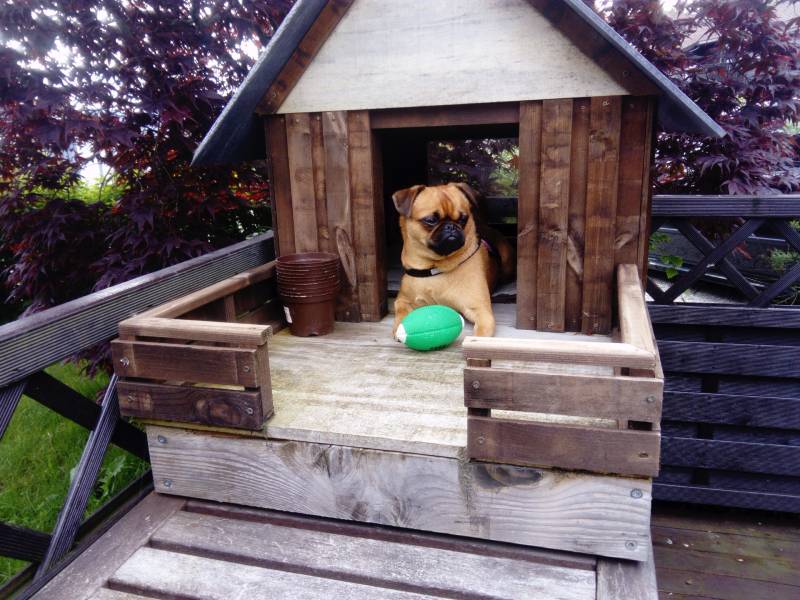
One of the most important parts of any project is deciding what material to use. Good materials that are well suited to your particular goal can make or break a project. That is especially true of something as important as a dog house. A dog house must be built properly in order to shelter, protect and house your dog. So what materials are going to be good enough for your precious pup? There are plenty of options that can make an excellent choice for building a DIY dog house. From brick to plastic to specialty woods, there are tons of options to choose from. Here are five of the best materials for building a dog house.
The 5 Best Dog House Materials
1. Cedar
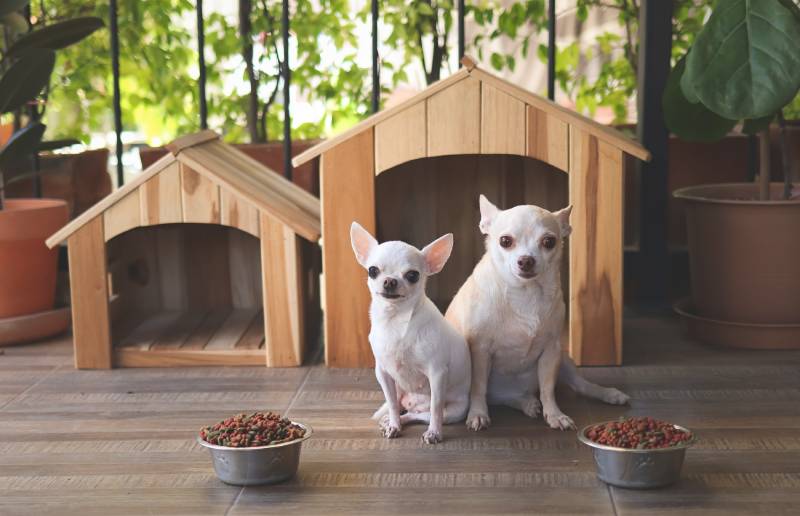
Cedar is one of the best materials to use for any outdoor project. Cedar is a specific type of wood that is superior in almost every aspect to other types of wood when it comes to outdoor durability. Cedar is lightweight and easy to work with. It is also naturally rot resistant and insect resistant. That means that it can sit out in the rain and the sun without suffering the same ill effects that other wood, like spruce or pine, will. Cedar also looks great with a rich red color and smells amazing. If you want to build a dog house out of wood, you should seriously consider getting cedar for your project.
The biggest downside to cedar is that all of these benefits come with some enhanced costs. Cedar is expensive. Cedar also typically comes in the rough (rough-sawn) and getting cedar that is planed to be smooth can require a special order and cost even more money. However, the result will be a beautiful and durable dog house that can last for years outdoors with little to no maintenance.
- Rot resistant
- Insect resistant
- Weather resistant
- Lightweight
- Smells great
- Expensive
- Not as prevalent as other types of wood
2. Pressure Treated Pine
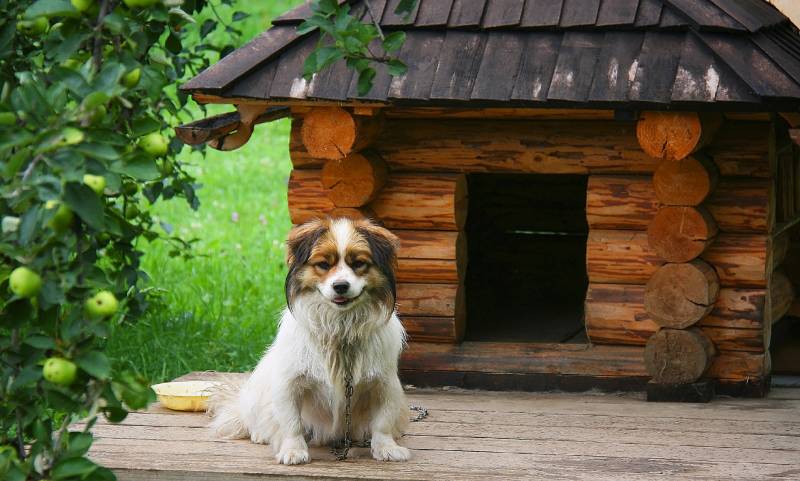
Pressure-treated pine is another type of wood that is designed to last outdoors with little to no maintenance. Pressure-treated (or PT) pine goes through a process in which the wood is soaked in salt water and copper to help it weather the outdoors better than untreated wood. This will greatly reduce the risk of rot and insect infestation. Pressure-treated wood is heavy, but it is cheap and plentiful. Pressure-treated wood comes in all shapes and sizes, and you will be able to build nearly any dog house you can think of out of this material.
Some people worry that pressure-treated wood is toxic, but that is no longer the case. Special types of marine wood and decades-old types of pressure treated had some toxic chemicals in them, but that has been phased out in the name of environmentalism and safety.
- Cheap
- Plentiful
- Rot resistant
- Multiple options and sizes to choose from
- Heavy
- Some wood can be wet
3. Brick

Brick is a classic and durable building material. People live in brick houses, and so can your dog. Building a brick dog house is relatively simple. Brick can be used to create an extremely strong dog house that can last for many years. Brick will not wither in the sun and can withstand beating rain. Brick dog houses can also look great and will make an eye-catching addition to your outdoor space. Brick is also cool, and will temperature regulate itself so that the interior should almost always be comfortable.
The problem with brick is that it requires some knowledge to install properly. It also requires extra tools and materials like trowels, brick-cutting saws, and mortar. If you have worked with brick or stone in the past, this will not be a problem, but if you are trying to build a brick dog house from scratch with little experience or tools, then you might run into some increased costs and time.
- Can last for years
- Temperature regulates
- Looks great
- Weather resistant
- Experience helps when building with brick
- Specialized tools and materials required to finish the job
4. Concrete Block
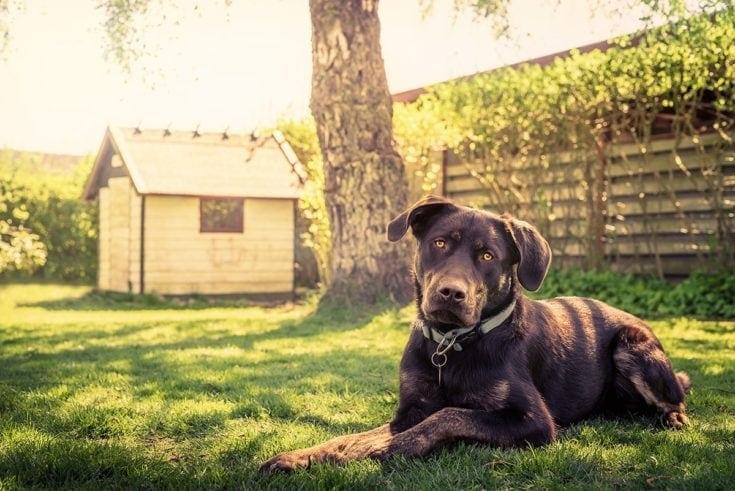
Concrete block, or cinder block, can be an excellent building material for a dog house. Concrete block is similar to brick in its strength and weather resistant properties. Building a simple shape with concrete blocks is very easy to do. In areas where concrete block houses are common (like the southeast and the southwest), these materials are readily available and affordable. Individual concrete blocks are larger than bricks, so you will need fewer of them than if you used brick or stone. If you keep your build simple, you will not need many advanced tools to finish.
However, you will still need trowels and mortar. Getting the mortar to set properly is the hardest part of building with blocks. Another problem is that, unlike brick, raw concrete blocks are rather ugly. You will need to dress them up if you are worried about appearance.
- Fairly easy to work with
- Plentiful and affordable in certain markets
- Weather resistant
- Highly durable
- Ugly appearance
- Requires mortar and trowels to set properly
5. Plastic

Plastic is one of the most common materials in the world, and it can be used to build a dog house. Plastic is highly versatile. You can buy plastic sheets from your local hardware store that can be easily used to create a dog house. You can also reuse or upcycle other plastic that you might have around your property, such as old plastic tubs or old corrugated plastic sheets. Plastic is readily available almost everywhere, and it is very affordable.
The problem with plastic is twofold. First, it can be brittle. This is especially true of old or upcycled plastic. If plastic has been sitting in the sun for too long, it can become fragile. The second problem is that plastic is poorly insulated, so you will need to do some extra work to keep the temperatures comfortable for your dog. Plastic dog houses can become too hot in the sun and too cold in the winter. However, there are plenty of dog house kits that use plastic. You just need to insulate it properly.
- Cheap
- Versatile
- Can be bought new or upcycled
- Can be brittle or fragile
- Poorly insulated
Requirements for an Outdoor Dog House
Protection
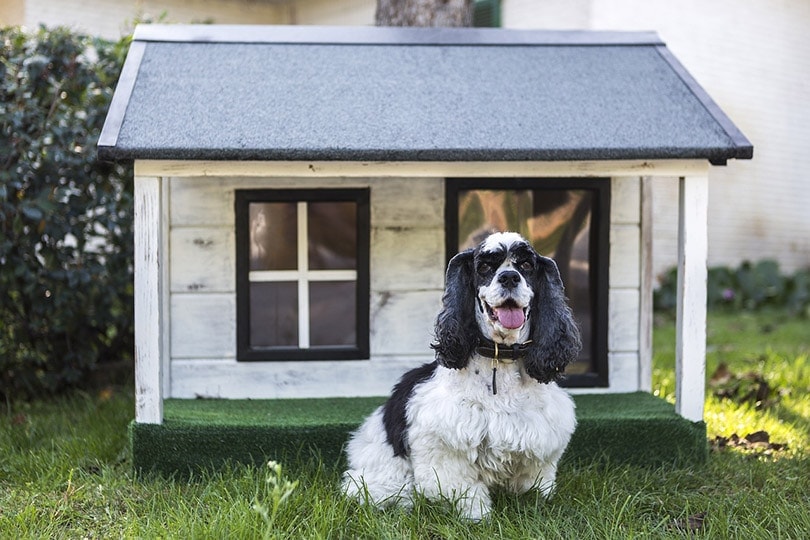
One of the most important parts of any dog house is protection. Your dog needs to be protected from the elements, including rain, snow, and extreme temperatures. Your dog should also feel safe and protected when they are in their house. If a dog does not feel safe going into the dog house, they will avoid going inside, which will undermine the point of having an outdoor dog house in the first place. This means that dog houses must be enclosed, well built, and insulated.
Size
A dog house must be the proper size for your dog. If a dog house is too small, it can be cramped and uncomfortable. Dogs must be able to stand up and turn around in order to be comfortable in an enclosed space. Your dog house should be, at a minimum, the same size as your most comfortable dog crate. Large dogs will need large dog houses to accommodate them.
Location
Location is another important factor that you must decide on before building your dog house. A dog house should be visible from the owner’s house so that you can keep an eye on your dog when they are outside. The dog house should also be in a flat open area that is easy to build on. You want to avoid putting your dog’s house underneath a tree to prevent branches and leaves from piling up on it. You might also want to consider putting your dog’s house in a partially shaded area to keep the temperatures from getting too hot.
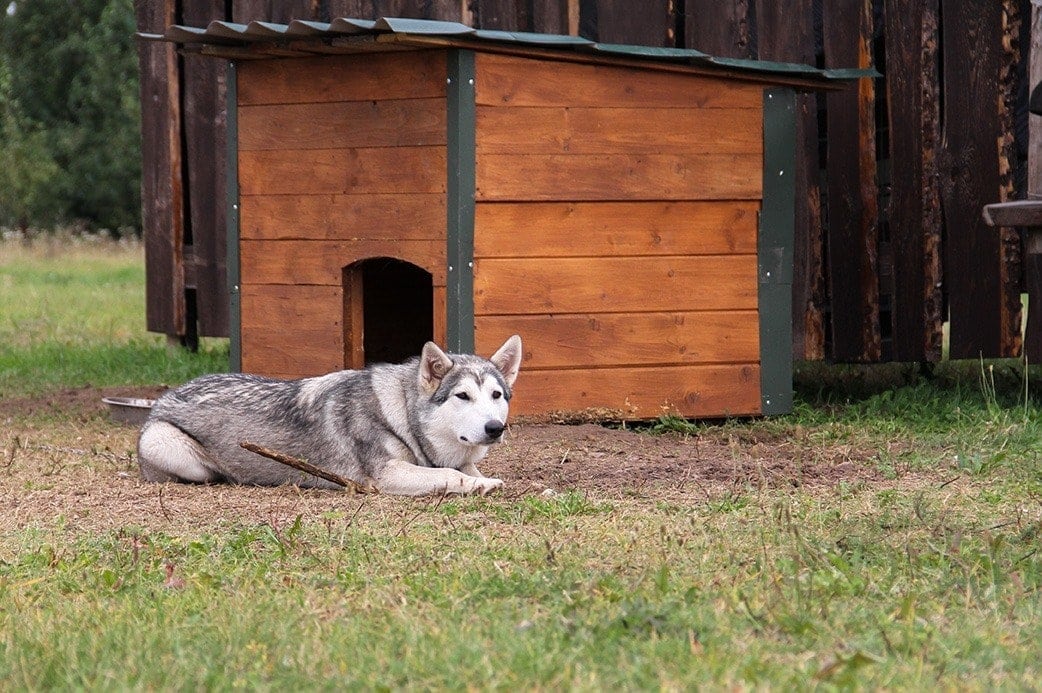
Comfort
If a dog house is not comfortable, your dog will not want to spend any meaningful amount of time in it. A comfortable dog house is the correct size, in the right location, is insulated, and might contain an all-weather dog bed. There are a number of outdoor dog beds that can be placed in a dog house to add that little extra bit of comfort needed to make a house a home.
Temperature
One of the most important things to consider before leaving your dog outside in a dog house is the temperature. You do not want to let your dog get too hot or too cold. A poorly insulated dog house sitting in the sun can get extremely hot. Similarly, a dog house in the winter can get unbearably cold. If you are curious, you should put a thermometer on your dog house so that you can easily monitor the temperature. If a dog house reaches extreme temperatures, it will be uncomfortable and can even become dangerous.
Conclusion
If you are planning on building your own dog house, you can’t go wrong with these materials. Whether you want to build out of wood, plastic, or concrete, there are great options here for you to choose from. Building a dog house that is durable, safe, and well insulated is critical to keeping your dog safe and secure while they spend time outside. These materials will help ensure that you make that happen.
See also:
Featured Image Credit: Kenneth Frost Lie, Shutterstock













